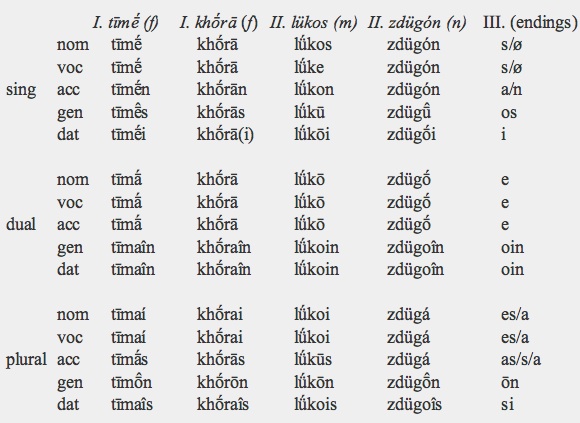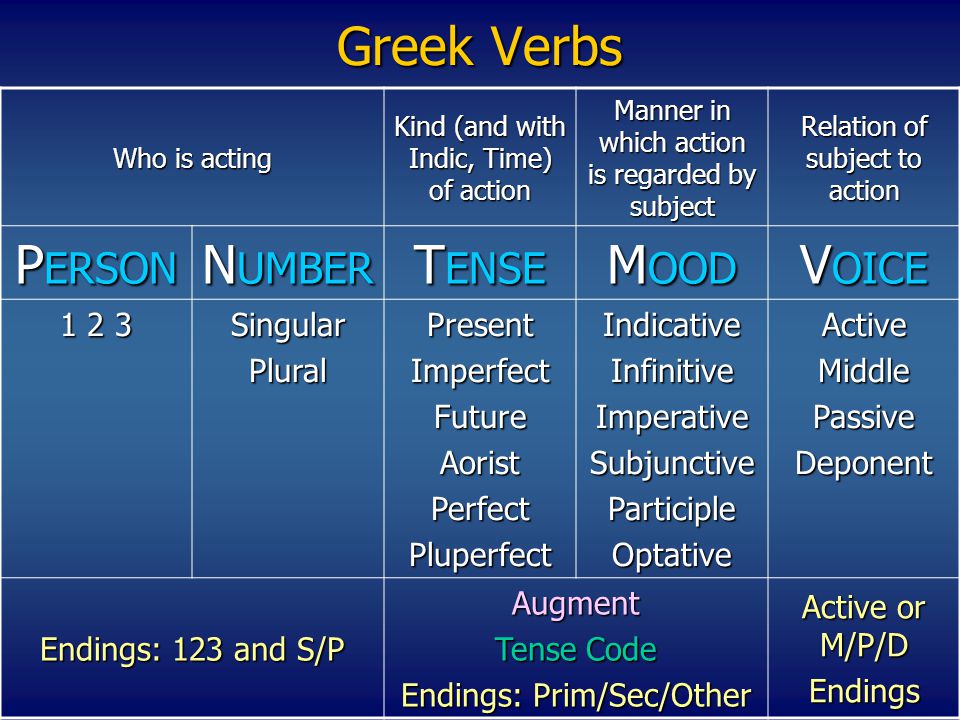In attic and ionic greek also in doric with some differences the σ in the first aorist suffix causes compensatory lengthening of the vowel before the sonorant producing a long vowel α η or ᾱ ε ει ι ῑ ο ου υ ῡ.
Aorist passive endings attic greek.
In the example below the stem is φθαρ instead of the present stem φθειρ.
Suffix for first aorist passive stems.
This is a compendium of inflectional suffixes in attic greek and a few suffixes for tense stems.
There is absolutely no difference in the way the two are translated.
Occasionally an aorist passive can have an ending with η ē.
Perfect infinitive mediopassive of verbs whose perfect passive stem ends in a vowel.
Ending the and vocalizing into an which then became standard in all.
These endings have evolved from combinations of stems ending in a consonant and the 1 sg.
Verb stem θε ντ 3 1 3 adjective endings.
Present system active of contract verbs in όω.
Aorist passive participle.
Participles in ᾱς ᾱσα αν weak aorist active 26.
Their meaning is simply well suited for the greek middle voice or the passive voice so they do not need greek active voice forms.
Historical period the taken from the i aorist active 3 pl.
In the participle the η shortens to ε.
Recall that the marker θη means an aorist is passive or intransitive.
The aorist tense always conveys a single discreet action i e.
While both the imperfect and aorist tenses refer to past actions and so are past tenses they differ in aspect.
Ending has become standard.
This is an unfortunate term since there is nothing defective about these verbs.
Some verbs use one way called the first aorist and some use the other called the second aorist.
This is known as the 2nd aorist or strong aorist passive and uses a different verb stem from the present.
Ending and 3 pl.
Formation of the aorist active indicative of ω conjugation verbs first aorist.
Present system middle passive of contract verbs in όω.
Present system middle passive of contract verbs in άω with η contraction 58.
You have already learned the verb ἔρχομαι i come go for.
As a result the pattern for the aorist passive participle is.
Participles in άς ᾶσα άν μι verb present or aorist active 27.

























